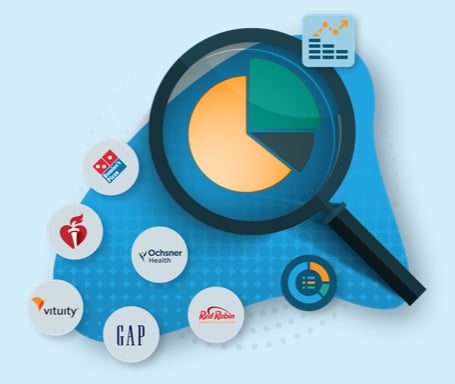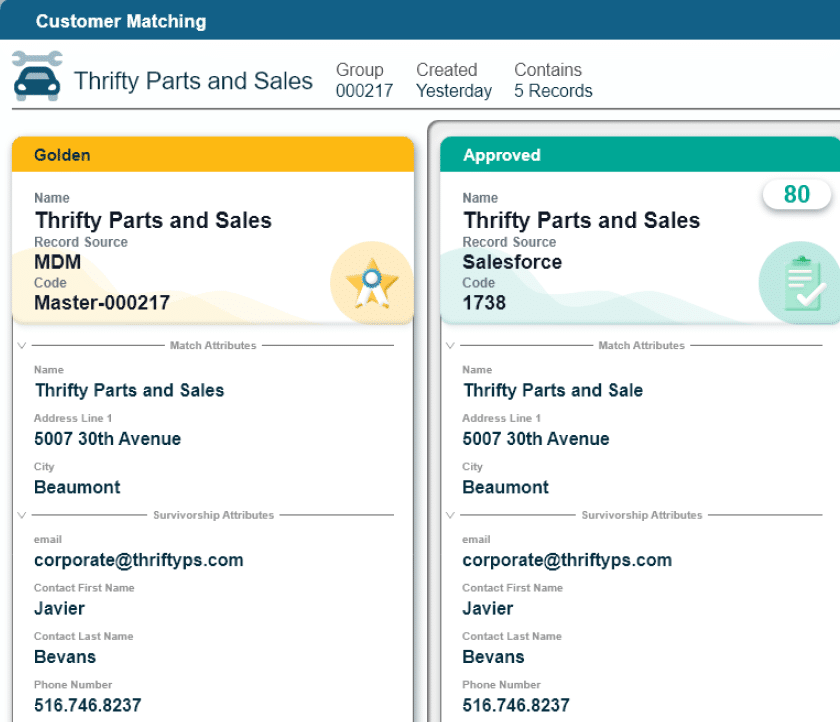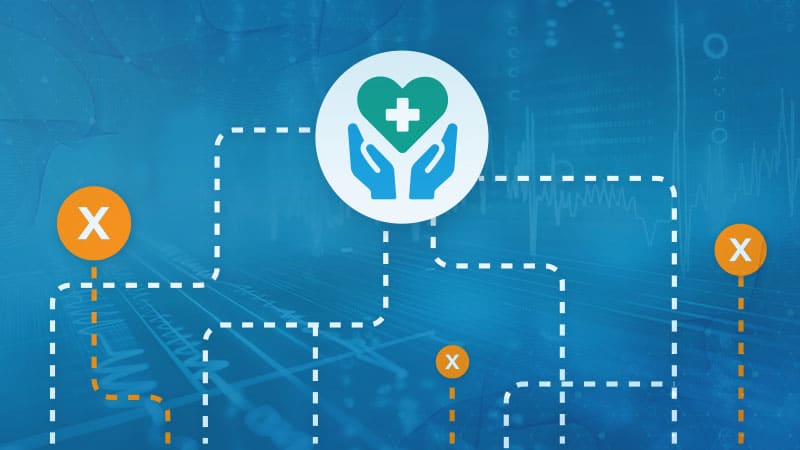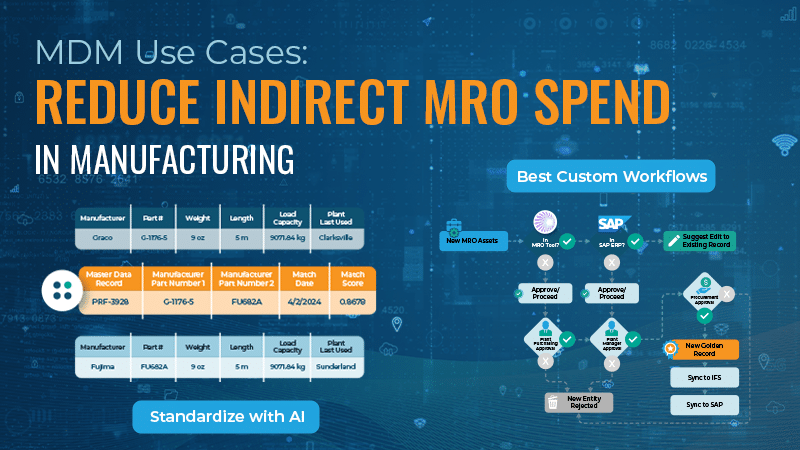Table of Contents
The value of a master data management (MDM) implementation is nearly always identified through real-world, business-focused use cases. While one pivotal use case might start the ball rolling, over time, multiple use cases emerge and evolve.
MDM software operates the same way each time, but depending on its application and the initiative it’s tied to, the value it delivers can vary. That’s why understanding and discussing use cases is critical.
Successful vs. Struggling MDM Programs
Over the years, I’ve seen both highly successful and struggling MDM programs. One of the key differentiators is clarity around business outcomes. When I ask organizations why they’re interested in MDM, responses like “We need good data,” or “We want a 360-degree customer view,” often signal trouble.
While those goals may sound logical, they don’t provide measurable outcomes. For MDM to create a sustainable and impactful program, it’s not just about getting the data right — it’s about getting the data right for a purpose.
Challenges in Identifying Business Outcomes
Organizations often struggle to link their MDM program to business outcomes. A common reason is that stakeholders within specific functions — such as procurement, finance or operations — might not see how their data is misaligned with other parts of the organization.
For example, data handoffs across end-to-end business functions (like procure-to-pay or order-to-cash) often reveal problems with data inconsistencies that can lead to broken business processes or obscure analytics when BI teams try to unify the data.
This is where MDM comes in. Done right, MDM allows organizations to ensure data is complete and consistent across systems and business functions. More importantly, by linking your MDM program to business functions, organizations can address challenges effectively and realize measurable business impacts.
Horizontal Use Cases
To help illustrate this, we’ll cover five example MDM use cases: three horizontal use cases applicable to any business and two vertical use cases specific to industries like financial services and healthcare.
Use Case 1: Cross-Sell and Up-Sell
We all know it’s generally cheaper and more effective to cross-sell to existing customers than to acquire new ones. However, challenges arise when data is siloed. For instance, connecting customer data across divisions or acquisitions can be complex.
How MDM Helps:
- Intelligent matching resolves commercial identities
- Enriching customer data with third-party sources reveals corporate relationships
- Data stewardship fills in gaps and ensures accuracy
Real-World Examples:
- A specialty finance group increased revenue by 50% after implementing MDM.
- A major CPG manufacturer projects a $25 million revenue increase over five years by leveraging accurate data.
- A specialty materials manufacturer estimates a $1.1 million revenue increase through targeted cross-selling.
→ Learn more about MDM for B2B cross-sell and up-sell
Use Case 2: Mergers and Acquisitions (M&A)
Mergers and acquisitions often result in multiple siloed systems. This has two negative impacts:
- It is difficult to achieve reliable analytics across the combined organization
- It is difficult to understand the acquired business’s historical and current performance based upon the acquiring organization’s KPIs and measures
To realize the acquisition’s value, streamlining and rationalizing data is critical.
How MDM Helps:
- Governs mappings between acquired and target systems
- Enables enterprise-wide analytics and cross-organization visibility
- Identifies revenue opportunities and synergies
Real-World Examples:
- A food service manufacturer used MDM to gain visibility weeks after an acquisition instead of years.
- A business and consumer services organization simplified customer targeting, increasing revenue and retention.
→ Learn more about MDM for mergers and acquisitions
Use Case 3: System Consolidation and Migration
System consolidation often follows M&A but can be challenging due to differing business processes and differing data structures and standards. These multi-year projects require ongoing data management and validation.
How MDM Helps:
- Automates mapping and identifies data validation challenges
- Ensures data quality for smooth migrations
- Avoids delays and unforeseen costs
Real-World Examples:
- A major CPG manufacturer reduced migration time and effort by 30%.
- A high-tech manufacturer pre-validated data before migration, reducing errors.
→ Learn more about MDM for system consolidation and migration
Vertical Use Cases
Use Case 4: Healthcare Provider Credentialing
Managing the process of initial and ongoing credentialing of healthcare professionals is a critical function for both healthcare providers (hospitals) and healthcare payers (health insurers). This process requires the aggregation of data on the healthcare professional typically from multiple internal and external sources, some of which may lack a common identifier such as NPI number. Many healthcare organizations spend countless hours manually assembling, validating and correcting data in support of the credentialing process.
How MDM Helps:
- Consolidates provider data from internal and external sources
- Identifies and remediates data quality issues before credentialing begins
Real-World Examples:
- An integrated health system reduced onboarding time by streamlining credentialing processes.
- A central US health system saved significant revenue by reducing delays in provider services.
→ Learn more about MDM for healthcare provider credentialing
Use Case 5: Financial Services – Know Your Customer (KYC) and Anti-Money Laundering (AML)
KYC and AML compliance is mandatory, but for many financial institutions, these processes often require extensive manual data wrangling, research and data validation. This not only exacerbates the cost of compliance but can also slow customer onboarding and impede the timely execution of financial transactions, leading to customer frustration and, in some cases, customer churn.
How MDM Helps:
- Fills gaps and ensures accurate customer profiles
- Reduces false positives in AML flags, saving resources
- Enhances compliance and reduces reputational risks
Real-World Examples:
- An international insurer reduced false positives by consolidating transaction data.
- A top 25 bank streamlined compliance efforts, avoided redundant KYC efforts, and minimized errors by automating data management.
→ Learn more about MDM for Know Your Customer (KYC) and Anti-Money Laundering (AML)
Discover Your MDM Use Case with Profisee
MDM’s value lies in its ability to deliver actionable insights and operational efficiencies across various use cases. The key is to start with the business use case in mind: define your goals, link the use case to measurable KPIs, identify the necessary domains and work backward to implement a focused solution.
If you’re unsure where to start, Profisee has a wealth of expertise and resources to help. Reach out to our team to explore how MDM can create a sustainable impact for your organization.

Christopher Dwight
Christopher is a well-respected master data management (MDM) thought leader and the VP of MDM Strategic Programs at Profisee. Christopher has been in the enterprise information management and MDM space for more than 25 years, including senior leadership stints at Oracle and Informatica. Over those years, Christopher has engaged with hundreds of organizations to assist them in their data management strategies and MDM journeys.











